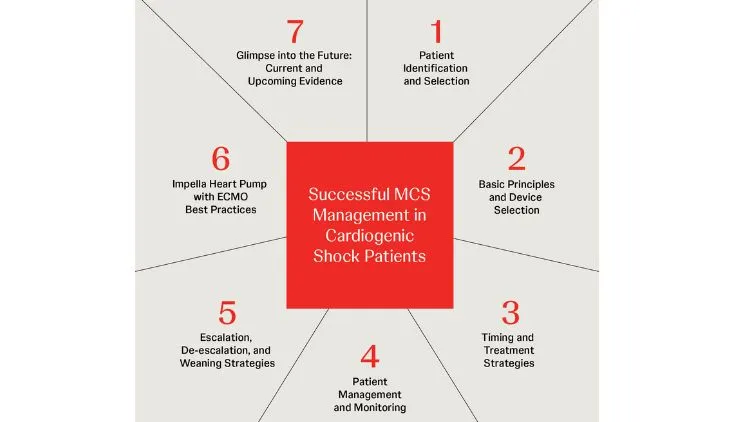Access & Closure, Clinical Research & Data, Femoral Access, IABP, Impella Education, Insertion, Patient Management, Safety & Efficacy, AMI Cardiogenic Shock
How Do Bleeding Rates with Impella® Compare to Bleeding Rates Associated With Other Forms of Mechanical Circulatory Support?
Multiple studies have shown that there is no significant difference in terms of bleeding risks and vascular complications, such as formation of arteriovenous (AV) fistula, mesenteric ischemia, aortic rupture, and leg ischemia between the Impella® heart pump and intra-aortic balloon pump (IABP).1,8 Notably, data from the PROTECT II randomized controlled trial show that patients treated with Impella had numerically lower rates of vascular complications compared with patients treated with intra-aortic balloon pump (1.4% for Impella versus 1.9% for IABP).1
In cases of cardiogenic shock, Impella® has comparable or lower bleeding rates compared with other forms of mechanical circulatory support (eg, TandemHeart, extracorporeal membrane oxygenation (ECMO), IABP).2-7, 11
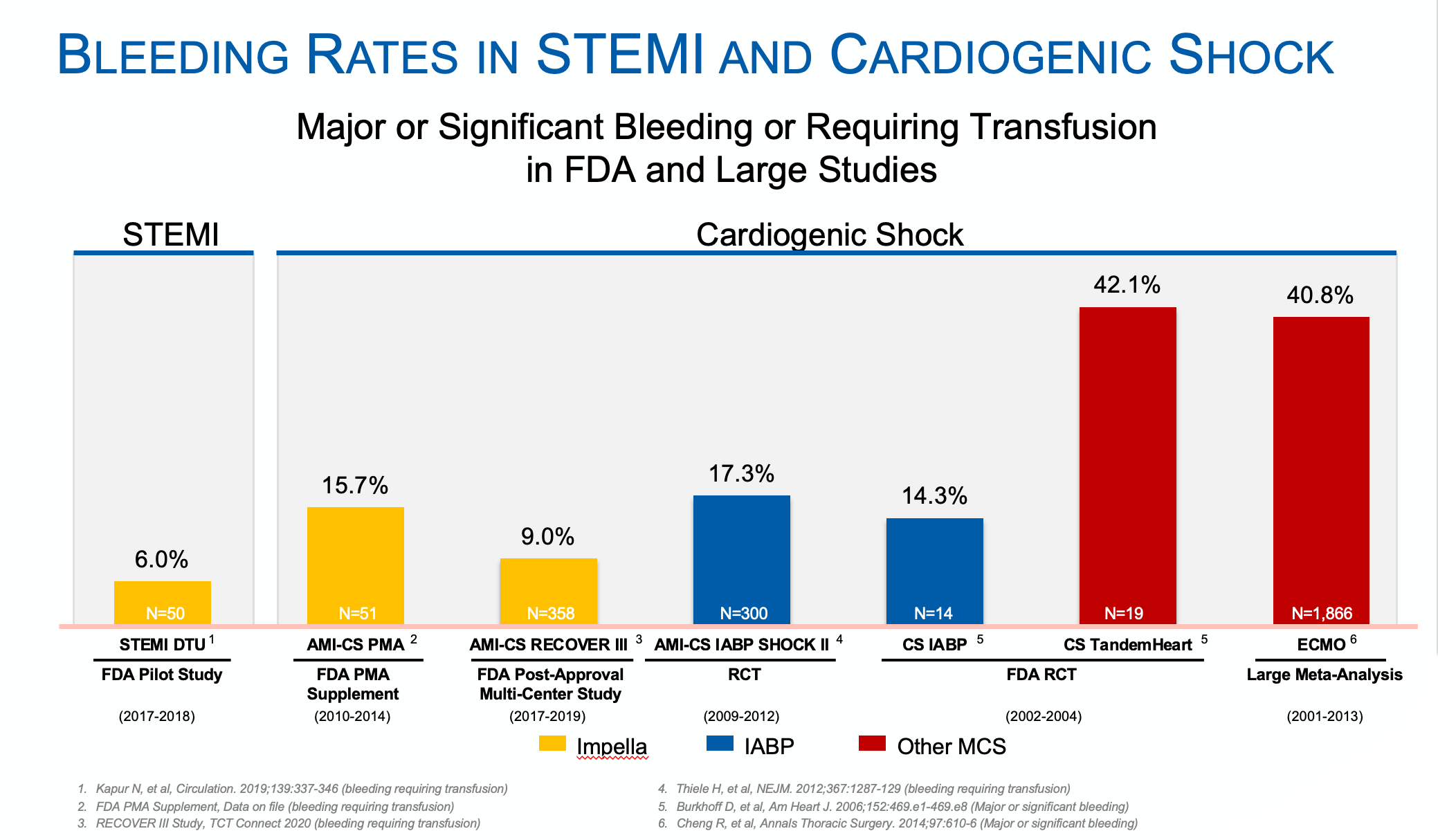
Of note, bleeding rates with Impella in shock have gone down since the initial pre-market approval of the device, indicative of a learning curve with Impella use.2-7, 11 As operators gain experience with Impella, bleeding rates go down.

When looking at data on bleeding rates, it is important to use contemporary data. In just the past few years, Impella technology, sheaths, and introducers have improved dramatically. In addition, training has improved. There are many access and closure best practices available now that were not widely available just a few years ago. All these factors—experience, technology and product advances, and access and closure best practices—help improve patient outcomes.
What techniques can help manage bleeding with Impella?
Training and experience correlate with better bleeding management. The Society for Cardiovascular Angiography and Interventions (SCAI) has created a free eBook to teach best practices. Click here to access the eBook: SCAI Vascular Access, Management and Closure Best Practices, edited by Adhir Shroff, MD, and Duane Pinto, MD.
In addition to vascular access and closure techniques discussed elsewhere, three keys to successfully managing bleeding complications with Impella are to:
- Choose the correct introducer
- Secure the repositioning unit
- Follow good ICU management practices
Choosing the correct introducer
For Impella CP®, use the provided peel-away introducers. Avoid using the 14Fr x 30 cm Cook due to higher insertion and removal forces. In addition, it is important to always completely remove all peel-away introducers before peeling to reduce potential bleeding complications.
Securing the repositioning unit
Securing the Impella repositioning unit is an important aspect of managing potential bleeding complications. The repositioning unit consists of a sheath and an anticontamination sleeve with an anchoring ring and suture pads. The sheath on the catheter shaft allows repositioning of the catheter. The anchoring ring of the anticontamination sleeve secures the sheath to the catheter and the StatLock® compatible suture pads help secure the repositioning sheath to the patient’s skin. Advance the repositioning sheath fully into the arteriotomy, but do NOT insert the blue hub into the tissue tract. Be sure to secure the blue butterfly to the skin and suture with forward tension. If bleeding is observed, use folded 4x4s under the hub of the sheath to help maintain the angle of insertion.
Following good ICU management practices
In the ICU it is important to manage the patient to maintain proper Impella position. With regard to the Impella, make sure the butterfly is sutured to the skin and not inserted into the tissue tract. In addition, avoid unnecessary rolling or patient movement to help maintain Impella position. Per physician orders, use a leg stabilizer or other means of immobilizing and maintaining the access site straight.
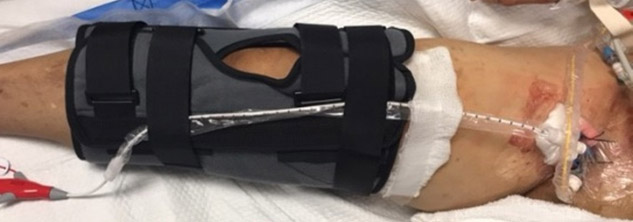
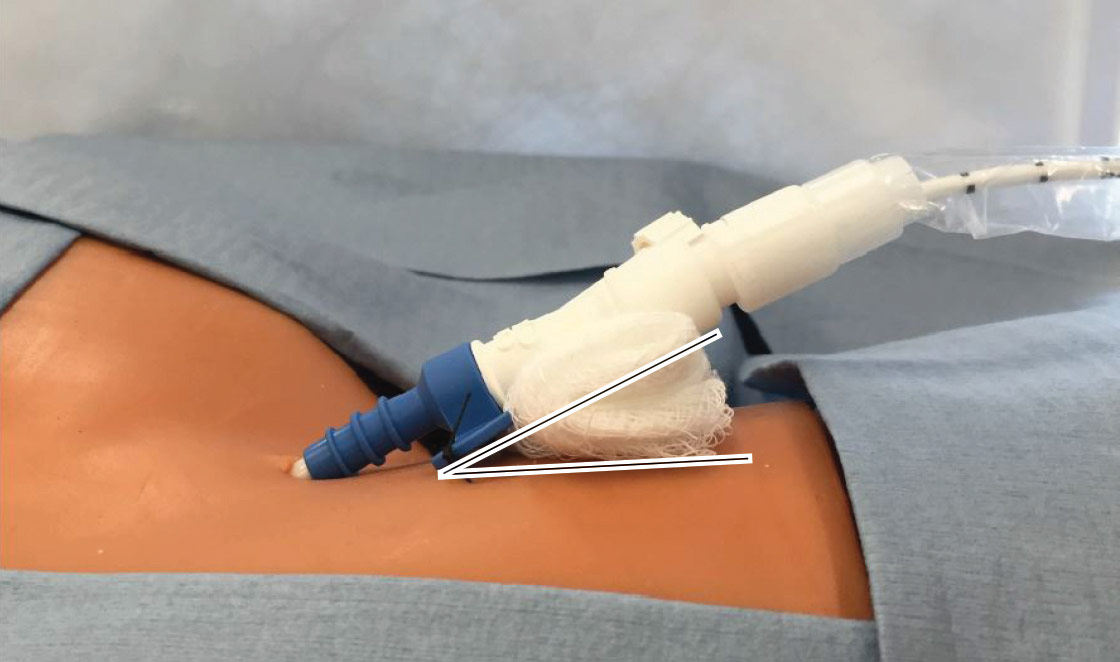
How can vascular access techniques help prevent bleeding?
The safety and success of large bore access procedures depend on good femoral arterial access techniques. Two key best practices are:
- Use ultrasound and fluoroscopic guidance to optimize access
- Use micropuncture and consider low stick angle
Ultrasound and fluoroscopic guidance
According to Marie-France Poulin, MD, FACC, FSCAI, “Successful femoral large bore access requires entering the artery with a single antegrade puncture (modified Seldinger technique), avoiding areas of calcification in the vessel, and staying above the femoral bifurcation (to minimize the risk of pseudoaneurysm and hematoma) and below the inguinal ligament (to minimize the risk of retroperitoneal bleeding).”10 As she explains in Vascular Access, Management, and Closure Best Practices, a free SCAI eBook, operators should optimize vessel entry using a combination of fluoroscopy and ultrasonography. Fluoroscopy helps identify the inferior border of the femoral head and helps avoid high puncture, while ultrasound helps identify the femoral artery bifurcation, size of the lumen, areas of calcifications, and significant plaque.10
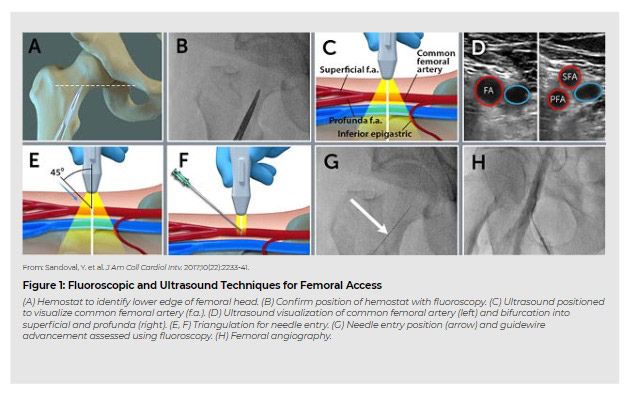
Micropuncture and low stick angle
Another best practice for access is the use of micropuncture technique to reduce vessel trauma and blood loss and facilitate hemostasis in case of inadequate vessel entry site. The 21G micropuncture needle has a 56% smaller inner lumen compared to the 18G standard Cook needle, corresponding to a nearly 6-fold reduction in blood flow.
The micropuncture technique entails inserting the 21G micropuncture needle at a 30- to 45-degree angle 1-2 cm below the site of entry to avoid high arterial punctures, and to minimize lift on the vessel and sheaths. You will then advance a 0.018” guidewire through the needle into the artery, removing the needle, and advancing a micropuncture sheath (typically 4Fr) into the femoral artery before withdrawing the guidewire. Confirm safe entry with femoral angiography and then upsize the micropuncture sheath to a larger sheath over a 0.035” wire.
How can vascular closure techniques help prevent bleeding?
Vascular closure devices (VCDs) are part of the closure best practices for large bore arterial access in many institutions. They can reduce bleeding and vascular complications, facilitate patient ambulation, and reduce the length of hospital stay.9
Large bore closure devices currently available in the United States include two commonly used suture-based devices, Perclose ProGlide® (Abbott vascular) and Prostar XL® (Abbott Vascular), as well as MANTA® (Teleflex), a novel collagen-based closure device approved by the FDA in 2019. Many other new devices await entry into the market.
Descriptions of vascular closure devices and other best practices for vascular closure are available in a free eBook, Vascular Access, Management, and Closure Best Practices, available from SCAI.10 In this book, Marie-France Poulin, MD, FACC, FSCAI writes that successful homeostasis is the key to procedural success.10 Alexander Truesdell, MD, FSCAI, notes that vascular complications occur more frequently than procedural complications and that “safe vascular closure, like safe vascular access, is a cornerstone of percutaneous coronary, cardiac, and vascular intervention and should be given the same attention as the primary procedure.”10
Best practices for large bore vascular closure highlighted in this SCAI eBook include:10
- Close large bore access over a guidewire (eg, long 0.035” wire) to retain control of the site and allow for deployment of additional vascular closure devices.
- Utilize post-closure digital subtraction angiography (DSA) imaging from a second access site if residual bleeding is suspected.
- For radial or ulnar arterial interventions, use a standard radial band placed “upside down” with patent hemostasis; this stabilizes the inflated segment of the band by placing the flat panel of the band over the radial artery.
- Perclose ProGlide systems can be used for closure of large bore vascular access up to 24Fr.
- Manual compression is feasible for vascular closure and effective if done correctly. A variety of assisted manual compression devices are available to help achieve hemostasis and potentially reduce bleeding and vascular complications. These include FemoStop™ Gold (St. Jude Medical), C-Clamp devices such as CompressAR® and ClampEase® (Advanced Vascular Dynamics), and hemostasis pads.
- Cross-over balloon occlusion technique (CBOT) provides a “dry” environment for controlled vascular closure and hemostasis of large bore sheaths and safely facilitates percutaneous mechanical circulatory support explantation several days after device insertion.
- “Dry closure” is highly recommended during axillary arteriotomy closure to prevent vascular complications. Double Perclose is the most commonly used technique, however, “hybrid closure” (use of both Perclose ProGlide and plug-based closure devices) can be used as a primary strategy or for bailout.
References
- O’Neill, W.W., et al. (2012). Circulation, 126(14), 1717-1727.
- FDA PMA Submission, Data on file (bleeding requiring transfusion).
- Kapur, N.K., et al. (2019). Circulation, 139(3), 337-346.
- FDA PMA Supplement, Data on file (bleeding requiring transfusion).
- FDA Post-Approval Study, Data on file (bleeding requiring transfusion).
- Burkhoff, D., et al. (2006). Am Heart J, 152(3), 469.e1-469.e8.
- Cheng, R., et al. (2014). Ann Thorac Surg, 97(2), 610-616.
- Boudoulas, K.D., et al. (2012). Acute Card Care, 14(4), 120-124.
- Kaki, A., et al. (2018). J Interv Cardiol, 31(6), 969-977.
- Shroff, A. and Pinto, D. (2019). Vascular Access, Management, and Closure Best Practices. Society for Cardiovascular Angiography & Interventions.
- Thiele, H., et al. (2012). N Engl J Med, 367(14), 1287-1296.
- 1420 sites supporting 96,265 patients. Data on file. Abiomed Impella Quality (IQ) Data, Jan 1, 2016 – Sept 2019 to Date. Danvers, MA: Abiomed.
- Mean patients treated by Impella Centers: Mean:61; Median: 37.
NPS-505

